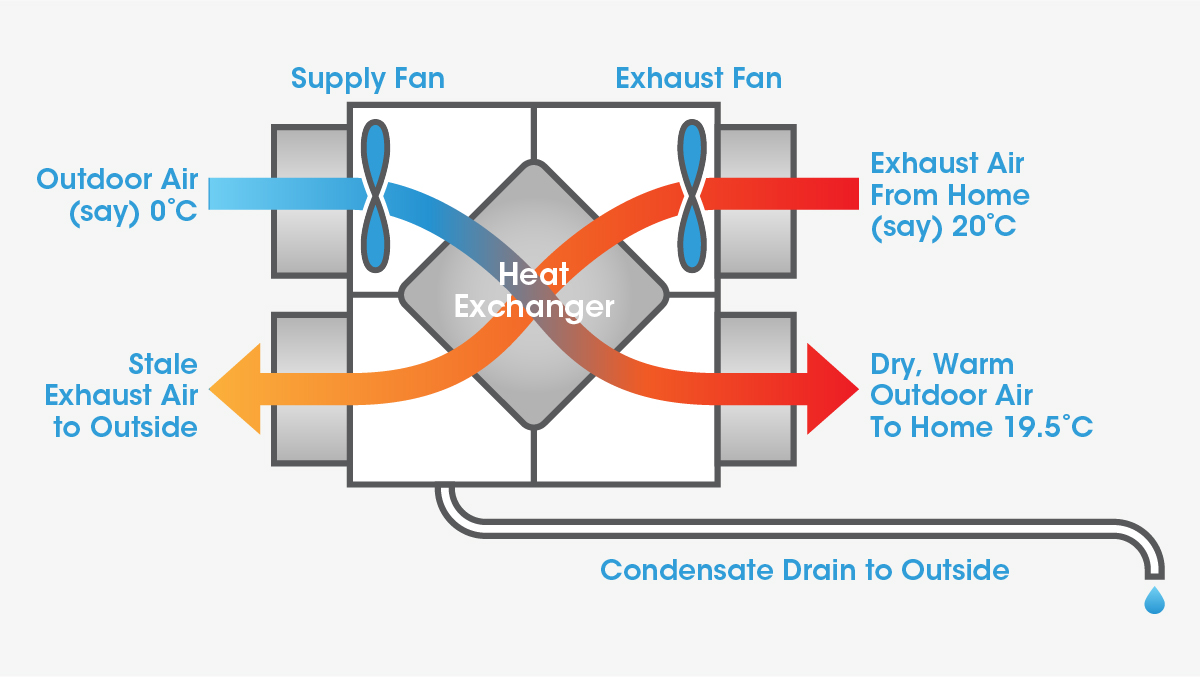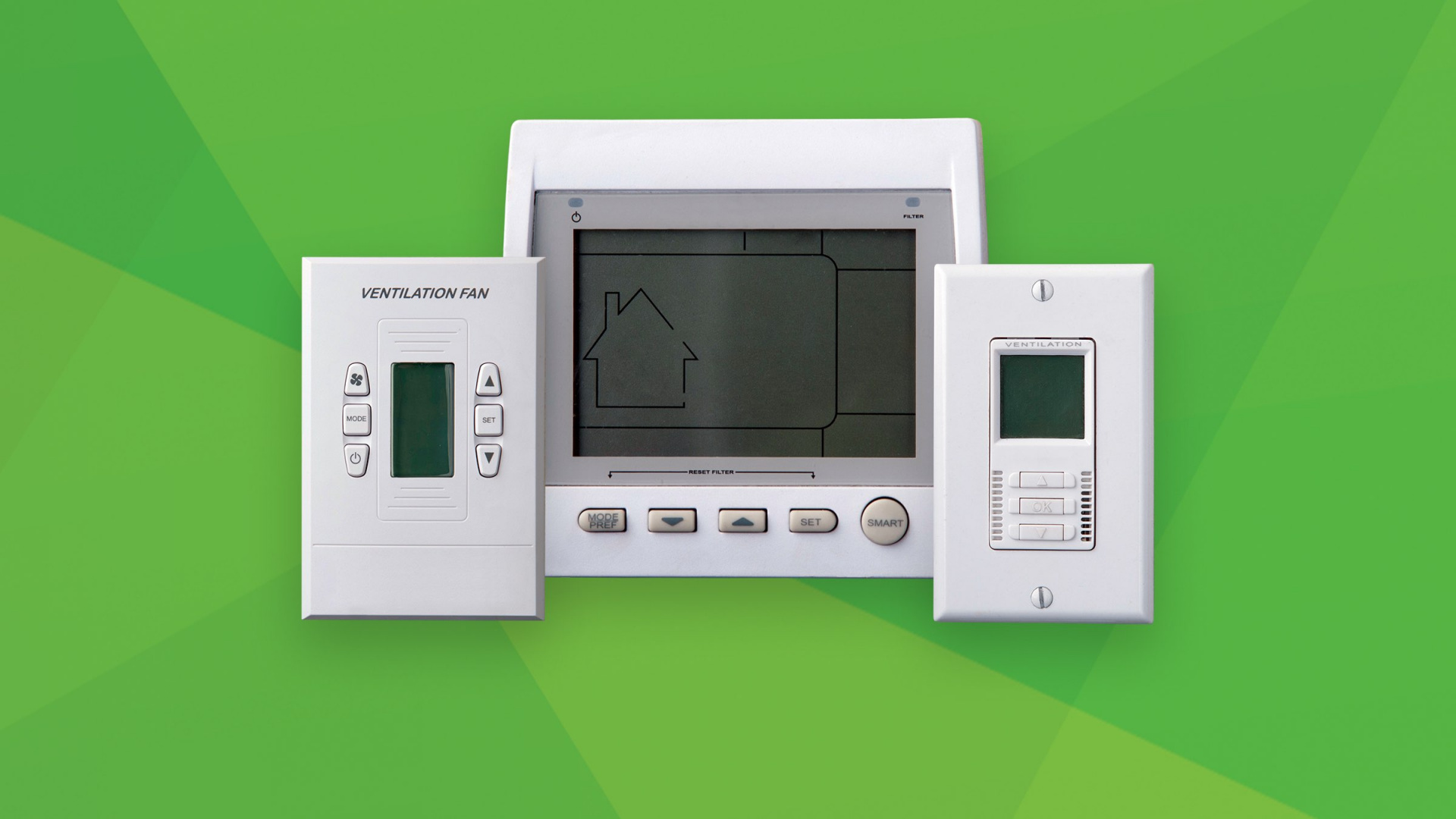A heat recovery ventilator (HRV) helps maintain indoor air quality, lets you control humidity levels in your home, and helps you save money on your energy bills. Your HRV provides the fresh air you need to keep your family healthy and reduce the potential for moisture damage to your home.
Many homes in Manitoba, especially newer homes, have an HRV, but many homeowners have it turned off, don’t know how to use it, don’t have it set up properly, or don’t maintain it well. We’re here to help you learn how to use your HRV to maximize your comfort and energy savings.
HOW IT WORKS
An HRV uses fans to circulate air throughout your home. The HRV exhaust fan removes humidity, odours, and carbon dioxide, while the HRV supply fan replaces the exhausted air with fresh outdoor air. Filters in the HRV prevent dust, air pollutants, and other contaminants from reducing the performance of your HRV.
HRVs can recover heat from the air it exhausts and uses it to pre-heat the supply air introduced into the home. That transfer of heat saves you energy and money.

HRV MAINTENANCE
To keep your HRV working effectively, you’ll have to do some simple maintenance. Below are some general tips, but be sure to read your manufacturer’s instructions too.
EVERY THREE MONTHS
Complete these tasks every three months to keep your HRV in good condition:
- Clean your filters. Start by unplugging the unit and opening the HRV filter service access doors. Remove and dispose of used filters, vacuum the filter sections inside the HRV, and install new, fresh filters.
Some filters can be washed. If you have washable filters that are very dirty, try soaking them in lukewarm water and mild soap. Rinse and air-dry. - Clean the exhaust grills in the kitchen and bathrooms.
- Clean the fresh air and exhaust hoods outside your home.
EVERY YEAR
You’ll need to clean the core once a year. Most cores can simply be removed and cleaned with a vacuum. They can also be soaked in mild soapy water, rinsed, and left to air dry. It’s a good idea to do this in the spring or fall when your HRV system isn’t working as hard.
Remember to vacuum out bugs and cobwebs and wipe the inside of the cabinet before replacing the core. Clean the drain tray and check for clogs. If you notice a clog, try pouring two liters of warm water through the drain.
HRVs AND HUMIDITY
Humidity levels vary as the outside air temperature changes. You can use your HRV to control the humidity in your home and reduce condensation on your windows.
| Outside air temperature | Practical humidity level |
|---|---|
| -35°C | 20% |
| -30°C | 25% |
| -25°C | 30% |
| -18°C | 35% |
| -10°C | 40% |
| -5°C | 45% |
| 0°C | 50% |
| Summer | 100% or off |
MAKE IT EASY WITH AN ADVANCED HRV CONTROL
An advanced HRV control can reduce your energy bill by matching your HRV ventilation needs with your lifestyle. It automatically cycles the HRV on and off to keep your home at your set humidity level. Some controls can even detect the temperature of the incoming air and adjust the humidity set-point control accordingly, so you don’t have to worry about adjusting your HRV controller to match the changes in outdoor air temperature.

